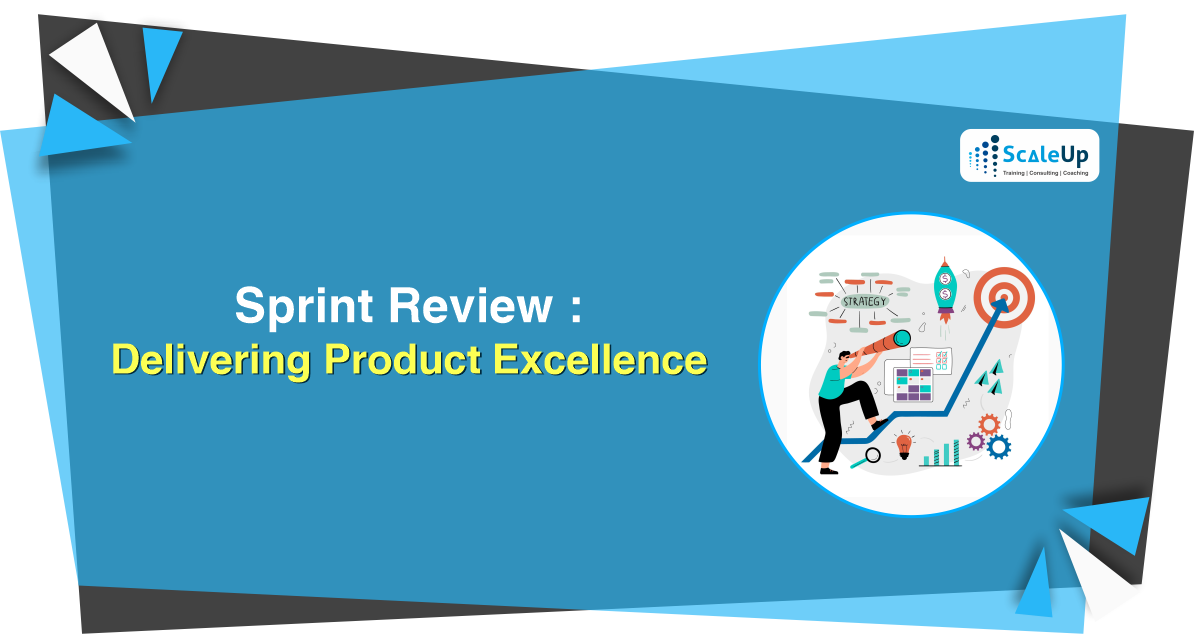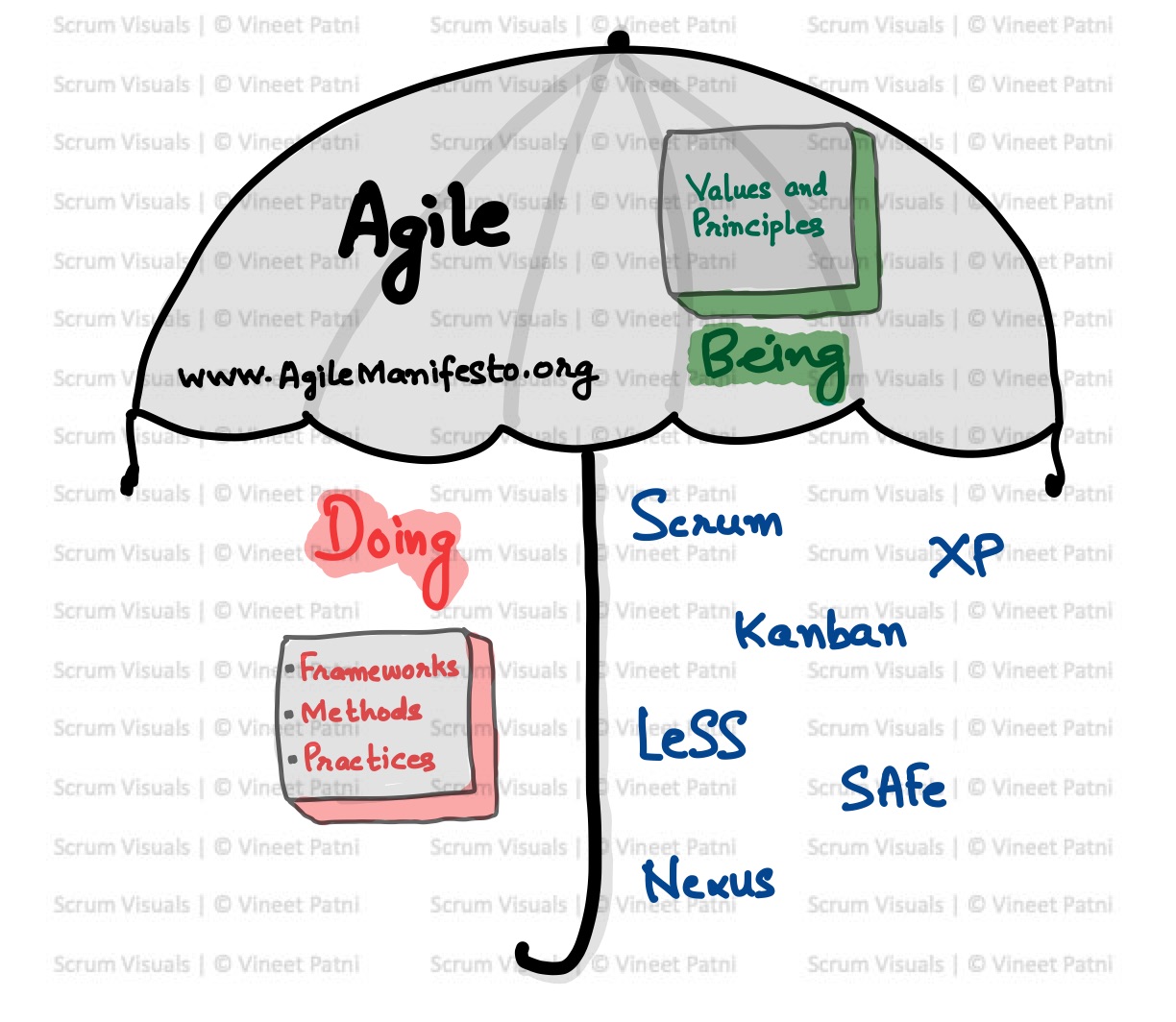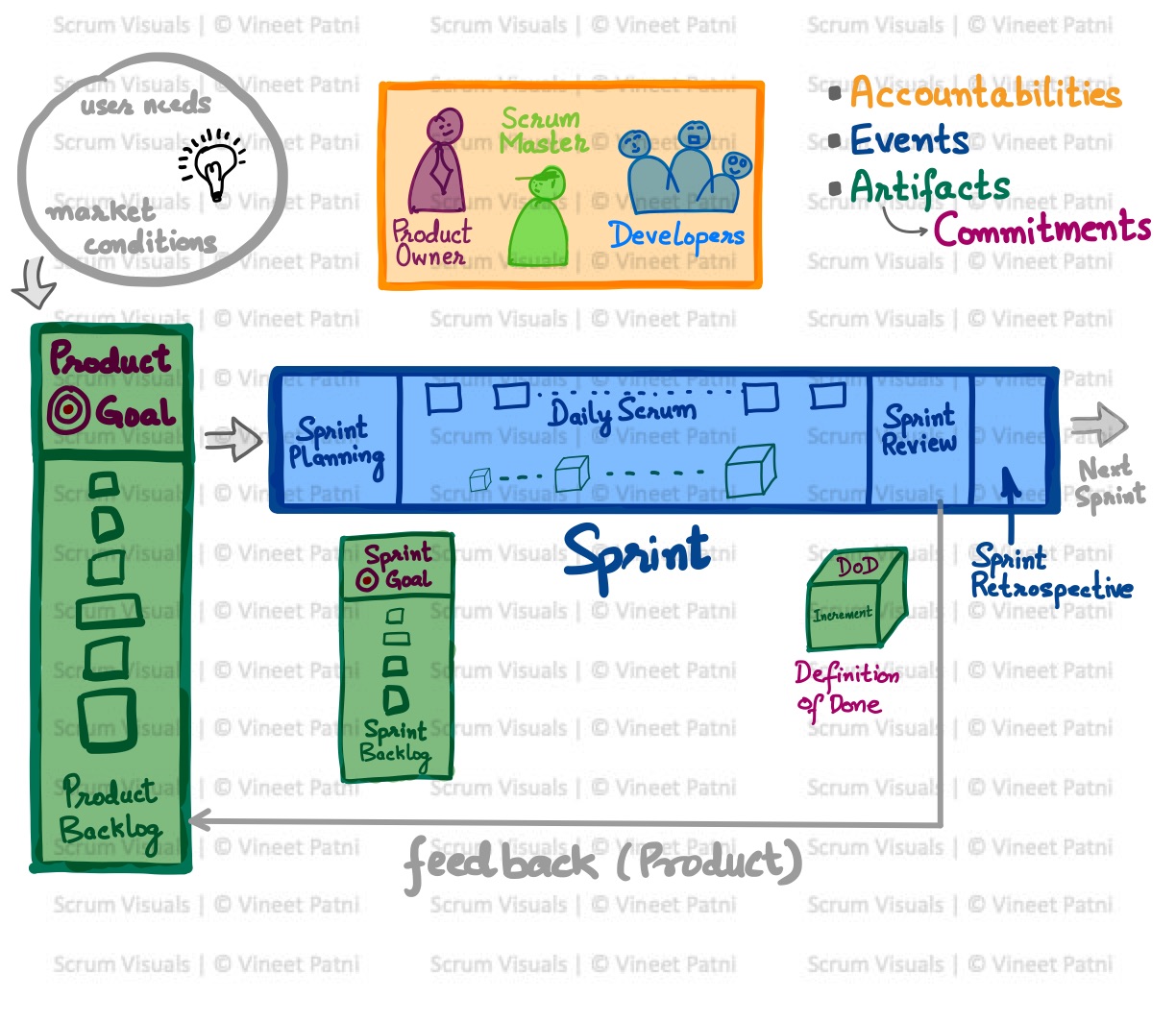Scrum has emerged as a highly effective framework for managing complex projects in the dynamic realm of software development. At its core, Scrum emphasizes adaptability, collaboration, and continuous improvement.
One of the pivotal components of the Scrum framework is the Sprint Review. This crucial event significantly contributes to achieving product excellence. In this blog, we’ll delve into the essence of Sprint Review, its importance in the Scrum framework, the involvement of Scrum team members with stakeholders, and how it drives product excellence.
Overview of Scrum Events and Team Involvement
Scrum comprises several essential events that facilitate iterative and incremental development. These events structure the framework and enable teams to regularly inspect and adapt their processes.
The key Scrum events include:
Sprint planning initiates each sprint, during which the Scrum team plans the work. It involves the product owner, the Scrum Master, and the developers.
Daily Scrum: These brief meetings occur daily, enabling team members to synchronize activities and plan the day’s work. The attendees are the developers of the Scrum Team members.
Sprint Review: A crucial event that occurs at the end of each sprint, allowing the Scrum team (product owner, Scrum master, and developers) and stakeholders to inspect the work done during the sprint.
Sprint Retrospective: Held after the Sprint Review as the last Event of the Sprint, this meeting focuses on continuous improvement, enabling the team to inspect and adapt its ways of working, including processes, tools, relationships, skillsets, etc. The participants include the Scrum Team members (Product Owner, Scrum Master, and Developers).
Unveiling Product Progress and Stakeholder Collaboration
What is Sprint Review?
The Sprint Review is a time-boxed event that marks the end of a sprint. Its primary goal is to inspect the product increment(s) created during that sprint and adapt the product backlog if necessary.
Who Participates in Sprint Review?
Lasting up to four hours for a one-month sprint, the review involves the Scrum Team (Product Owner, Scrum Master, and Developers) and relevant stakeholders, including individuals or groups interested in the product, such as customers, users, or sponsors. Their participation provides valuable feedback and helps align the product with expectations.
The How of Sprint Review
Product Increments Inspection (sometimes, demonstration): The Scrum Team members showcase the product increments built during the sprint. The demonstration only highlights completed or “done” work items, allowing stakeholders to visualize progress and provide feedback.
Collaborative Feedback Gathering: The product owner discusses the product backlog and potential adaptations based on stakeholder feedback following the demonstration or inspection. This interaction fosters collaboration and ensures that the product evolves in line with stakeholder needs and market conditions.
Reviewing the Product Backlog: The product owner revisits the product backlog, considering changes and new requirements that may have emerged during the sprint. This step guides the team in making a forecast for the upcoming sprint.
Sprint Review acts as a catalyst for achieving product excellence in multiple ways:
Transparency and Visibility: By showcasing the product increment, Sprint Review offers transparency, enabling stakeholders to understand what has been accomplished and providing visibility into the product’s progress.
Continuous Feedback Loop: The event facilitates a continuous feedback loop, allowing stakeholders to provide input and enabling the team to make necessary adjustments promptly. This iterative approach ensures that the product aligns closely with stakeholder expectations.
Validation of Product Assumptions and Future Direction: Sprint Review validates the product’s assumptions and direction for the future through stakeholder engagement. It ensures the team builds the right product, refining and adapting features as needed.
Empowering Informed Decisions: Stakeholder feedback gathered during the review equips the product owner with valuable insights to prioritize and refine the product backlog, guiding the team toward delivering the most valuable increments.
Why is Sprint Review Mandatory?
The Scrum Guide highlights the Sprint Review as a mandatory event in the Scrum framework for several compelling reasons:
Stakeholder Engagement and Collaboration: The involvement of stakeholders fosters collaboration and ensures that the final product aligns with their expectations, increasing the chances of overall project success.
Adaptation and Improvement: The Sprint Review provides an opportunity to inspect the product increment and adapt the Product Backlog based on stakeholder feedback. This adaptation ensures continuous improvement and alignment with changing needs.
Validating Progress: It serves as a checkpoint to validate the progress made during the sprint, allowing the team to assess whether they have met the sprint goal and produced a valuable increment.
Conclusion
In conclusion, Sprint Review is a pivotal event within Scrum, serving as a cornerstone for achieving product excellence. Its emphasis on transparency, collaboration, and continuous improvement makes it indispensable in delivering high-value products that meet stakeholder expectations.
For product owners seeking a deeper understanding of Scrum and its events, consider enrolling in a Certified Scrum Master course. Embracing the principles and practices of Scrum equips you with the tools and knowledge to navigate complex projects successfully.
Sprint Review remains a linchpin in the ever-evolving product development landscape, driving teams toward excellence and ensuring that the end product meets and exceeds customer needs and expectations.








